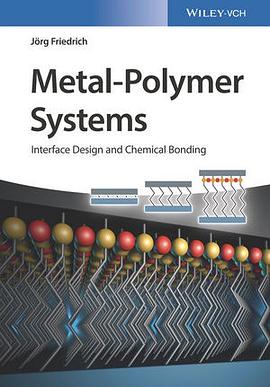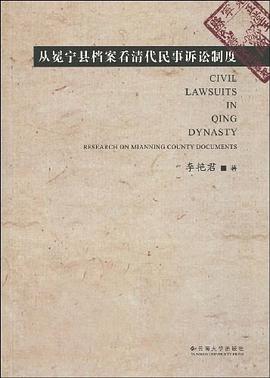Preface xi
1 High-Performance Metal–Polymer Composites: Chemical Bonding, Adhesion, and Interface Design 1
1.1 Introduction 1
References 10
2 Interpretation of Adhesion Phenomena – Review of Theories 13
2.1 General 13
2.2 Mechanical Interlocking 20
2.2.1 Mechanical Interlocking in a Macroscopic Scale 20
2.2.2 Mechanical Adhesion on a Microscale 20
2.2.3 Mechanical Anchoring on a Molecular Scale 21
2.3 Interdiffusion 23
2.3.1 Diblock Copolymers for Interface-Crossing Adhesion Promotion 23
2.3.2 Interdiffusion andWelding 23
2.3.3 Diffusion of Metals into Polymers 25
2.4 Interphase Formation 28
2.4.1 Polymer–Polymer Blends 28
2.4.2 Nanoparticle Composites 29
2.4.3 Transcrystalline Layers 29
2.4.4 Redox Reactions across the Metal–Polymer Interface 30
2.4.5 Reactions of Transition Metals with Aromatic Polymers 32
2.4.6 Loss in Anisotropic Orientation of Polymers Caused by Pretreatment or by Contact to Metals 34
2.4.7 Weak Boundary Layer 36
2.5 Weak Molecular Interactions (Cohesive Forces) 38
2.5.1 Thermodynamic Adsorption,WettingModel 38
2.5.2 Contact Angle, Surface Properties, and Adhesion 39
2.5.3 Contact Angle Measurement 40
2.5.4 Advancing and Receding Contact Angles, Contact Angle Hysteresis 42
2.5.5 Real Surfaces 43
2.5.6 Critical Surface Tension – Zisman Plot 44
2.5.7 Surface TensionTheories 46
2.5.8 Polar and Dispersive Components of Surface Tension 47
2.5.9 Acid–Base Interactions 48
2.5.10 Rheological Model 51
2.5.11 Summary 51
2.6 Electrostatic Attraction 52
2.7 Contaminations, Role ofWater, or Humidity 54
2.8 Coupling Agents 55
2.9 Use of Glues (Adhesives) 59
2.10 Hydrophobic Recovery 70
References 72
3 Interactions at Interface 89
3.1 Composites and Laminates 89
3.2 Laminate Processing 90
3.3 Polymers as Substrate or as Coating 92
3.4 Chemical Reactions at Surfaces 92
3.4.1 Chemisorption 92
3.5 Reactions of Metal Atoms with Polyolefins 97
3.6 Reaction of Metal Atoms with O-Functional Groups at Polymer Surfaces 97
3.7 Reactions of Metal Atoms with Amino Groups on Polymer Surfaces 105
3.8 Silane and Siloxane Adhesion-Promoting Agents 105
References 107
4 Chemical Bonds 113
4.1 Bonds in Polymers 113
4.1.1 Covalent C—H and C—C Bonds in Polymers 113
4.1.2 C—C Double, Triple, Conjugated, and Aromatic Bonds 116
4.1.3 C—O, C=O, O—C=O, and O=CO—O Bonds in Polymers 117
4.1.4 N-Containing Functional Groups 118
4.1.5 Chemical Bonds in Other Materials 119
4.2 Reactions of Chemical Bonds during Pretreatment 119
4.2.1 Aliphatic Chains 119
4.2.2 Preformed Degradation Products and Preferred Rearrangement Processes 121
4.3 Chemical Bonds at Interface 122
4.3.1 Polymer–Polymer Linking 122
4.3.2 Carbon–Metal Bonds 123
4.3.3 Covalent Bonds between Oxides and Polymers 126
4.3.4 Interface between Polymers and Transition Metals 127
References 130
5 Functional Groups at Polymer Surface and Their Reactions 135
5.1 OH Groups at Surface 135
5.2 Primary Amino Groups at Polymer Surfaces 140
5.3 Carboxylic Groups as Anchor Points for Grafted Molecules 143
5.4 Bromination 146
5.5 Silane Bonds 147
5.6 Click Chemistry 148
5.7 ATRP 150
5.8 Grafting 152
5.8.1 Grafting of Fluorescence Markers onto Functional Groups at Polyolefin Surfaces 153
5.8.2 Covalent Linking of Spacer Bonded Dye Sensors onto Polyolefin Surfaces 154
5.8.3 Covalent Linking of Spacer Bonded Dye Sensors onto Polyolefin Surfaces Supported by a Cucurbituril Jacket 155
5.8.4 Grafting of Polyglycerols onto Polyolefin Surfaces for Introducing Antifouling Property 156
5.8.5 Summary of Complex Structures Covalently Grafted onto Polyolefin Surfaces 159
5.9 Polymers Deposited onto Silicon or Glass 162
5.10 Molecular Entanglement of Macromolecules of Coating and Substrate at Polymer Surfaces (Interpenetrating Network at Interface) 162
References 165
6 Pretreatment of Polyolefin Surfaces for Introducing Functional Groups 173
6.1 Situation at Polyolefin Surfaces 173
6.2 Physical and Chemical Attacks of Polyolefin Surfaces 173
6.3 A Few General Remarks to the Pretreatment of Polyolefins 179
6.4 Introduction of Functional Groups to polyolefin Surfaces 184
6.5 Usual Pretreatment Processes and Their Advantages and Disadvantages 186
6.5.1 Oxygen Plasma Exposure 186
6.5.2 Structural Degradation of Polymer on Exposure to Oxygen Plasma 187
6.5.3 Degradation of Polymers by Exposure to Oxygen Plasma 192
6.5.4 Cross-linking of Polymers by Plasma-Emitted UV Radiation 198
6.6 Surface Oxidation by Atmospheric-Pressure Plasmas (Dielectric Barrier Discharge-DBD, Atmospheric Pressure Glow Discharge-APGD or Corona Discharge, Spark Jet, etc.) 201
6.7 Flame Treatment 204
6.8 Silicoater Process (Pyrosil) 205
6.9 Laser Ablation 205
6.10 UV Irradiation with Excimer Lamps 206
6.12 Mechanical Pretreatment 213
6.13 Cryogenic Blasting 214
6.14 Skeletonizing 214
6.15 Roughening for Mechanical Interlocking and Increasing of Surface Area by Plasma and Sputter Etching 215
6.16 Solvent Cleaning 215
6.17 SolventWelding 217
6.18 Chemical Treatment by Chromic Acid and Chromo-Sulfuric Acid 218
6.19 Chemical Etching and Functionalizing of Fluorine-Containing Polymers 220
6.20 Oxyfluorination 221
6.21 Sulfonation 222
6.22 Sputtering for Film Deposition 223
6.23 Cross-linking as Adhesion Improving Pretreatment (CASING) 225
6.24 Monosort Functionalization and Selective Chemical Reactions 226
6.24.1 Well-Defined Functionalization of Polymer Surfaces by Classic Organic Chemistry 226
6.24.2 Selective Monosort Functionalization of Polymer Surfaces by Oxygen Plasma Exposure and Post-Plasma Chemical Treatment for Producing OH Groups 227
References 237
7 Adhesion-Promoting Polymer Layers 259
7.1 General 259
7.2 Historical Development 261
7.3 Influence of Plasma Wattage on Chemical Structure of Plasma Polymers 263
7.4 Pulsed-Plasma Polymerization 265
7.5 Pressure-Pulsed Plasma 267
7.6 Copolymerization in Pulsed Plasmas 271
7.7 Some Additional Details to the Mechanisms of Plasma Polymerization 275
7.8 Often-Observed Abnormal Side Reactions Occurring in the Plasma Only 278
7.9 Structure of Plasma Polymers 281
7.10 Use of Plasma Polymers as Adhesion-Promoting Layers 286
7.11 Adhesion Promotion of VeryThick Layers 289
7.12 Summary 290
References 290
8 Monosort Functional Groups at Polymer Surfaces 299
8.1 Introduction 299
8.2 Bromination of Polyolefin Surface by Exposure to the Br2 Plasma 305
8.3 Bromoform as Precursor 309
8.4 Deposition of Plasma Polymers Carrying C—Br Groups 312
8.5 Loss in BromineGroups byWet-Chemical Processing 313
8.6 Other Halogenations 314
8.6.1 Chlorination 315
8.6.2 Fluorination 317
8.6.3 Iodination 317
8.6.4 Measuring the Electron Temperature in Haloform Plasmas 317
8.6.5 Comparison of Halogenation Processes 318
8.7 C—Br as Anchoring Point for Grafting 319
8.7.1 Changing the C—Br Functionalization into NH2 Functionalization 319
8.7.2 Other Functional Groups 321
8.7.3 Grafting onto C—Br Groups 322
8.8 Underwater Capillary Discharge Plasma or Glow Discharge Electrolysis (GDE) 323
8.9 Conclusions 323
References 332
9 Chemical Grafting ontoMonosort Functionalized Polyolefin Surfaces 337
9.1 General Aspects 337
9.2 Grafting of Spacers onto Radicals 344
9.3 Grafting of Spacers and Oligomers by Reaction with C—OH Groups at the Polyolefin Surface 346
9.4 Grafting of Linear Spacers and Oligomers onto C—Br Groups 347
9.5 Introduction of Spacers with Siloxane Cages (POSS) 349
9.6 Grafting via Click Reaction 350
9.7 Influence of Spacers on the Metal–Polymer Adhesion 351
9.8 Summary 352
References 353
10 Conclusions and Outlook to the New Interface Design 357
10.1 Introduction 357
10.2 Physical Effects Produced by Covalent Bonding of Metal to Polymer 360
10.3 Introduction of Functional Groups onto Polyolefin Surfaces Associated with Damaging of Polymer Structure Near Surface 363
10.4 Thermal Expansion Coefficients of Metals and Polymers 365
10.5 Differences between Al–Polyolefin and Polyolefin–Al Laminates 366
10.6 Protection of CovalentMetal–Polymer Bonds along the Interface 367
10.7 Reaction Pays for Grafting Spacer Molecules onto Polyolefin Surfaces 368
10.8 Special Requirements for Metal Deposition Especially Aluminum 370
10.9 UsedWays to Introduce Spacers for Maximum Adhesion 372
10.9.1 Spacer Attachment onto NH2 Groups 372
10.9.2 Spacer Grafting onto OH-Groups at Polymer Surface 375
10.9.3 Spacer Anchoring onto C—Br Groups 376
10.9.4 Silane Attachment 376
10.9.5 Silane Hydrolysis and Subsequent Partial Cross-linking 377
10.9.6 Adhesion Strength Measurements 381
10.9.7 Summary and Conclusions 383
References 388
11 Short Treatise on Analysis Chemical Features 395
11.1 General 395
11.2 Bulk Analysis 395
11.2.1 Infrared Spectroscopy 396
11.2.2 UV–vis Spectroscopy 400
11.2.3 NMR Spectroscopy 401
11.2.4 MALDI- and ESI-ToF-MS 403
11.2.5 HPLC and GPC/SEC 405
11.3 Surface Analysis 406
11.3.1 Sampling Depth 406
11.3.2 XPS 408
11.3.3 ToF-SIMS 410
11.3.4 SEIRA and IRRAS 412
References 414
Index 415
· · · · · · (
收起)






















